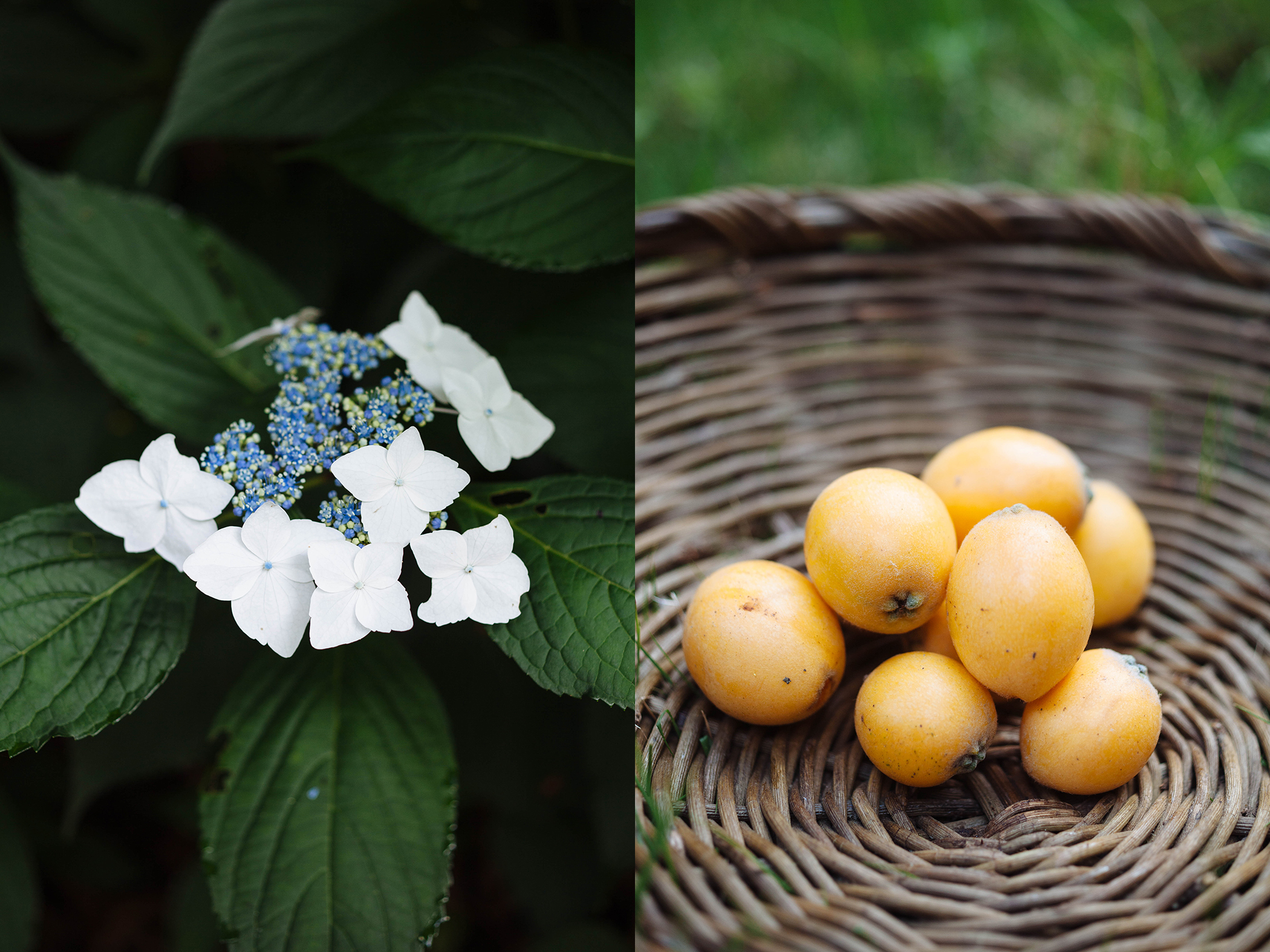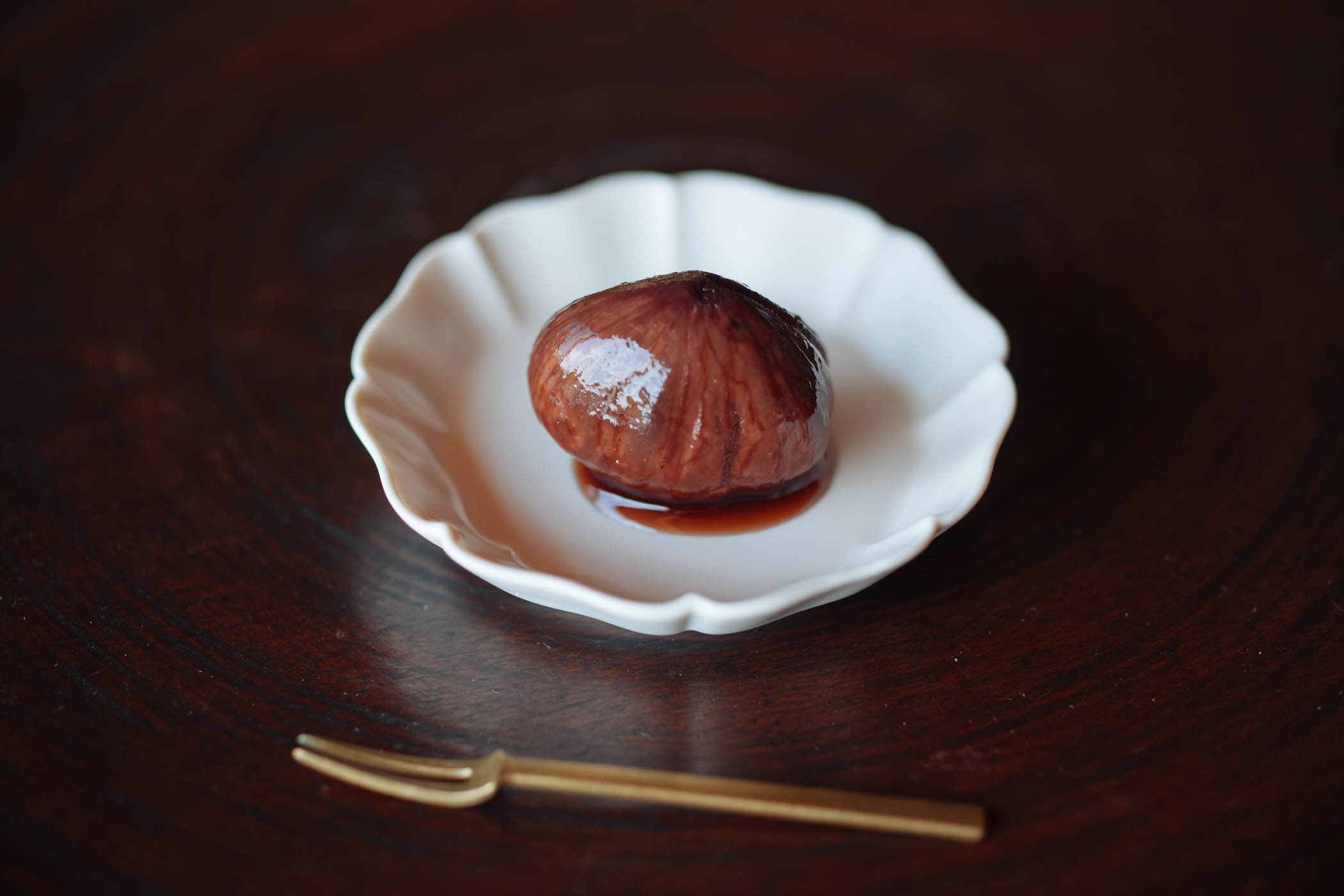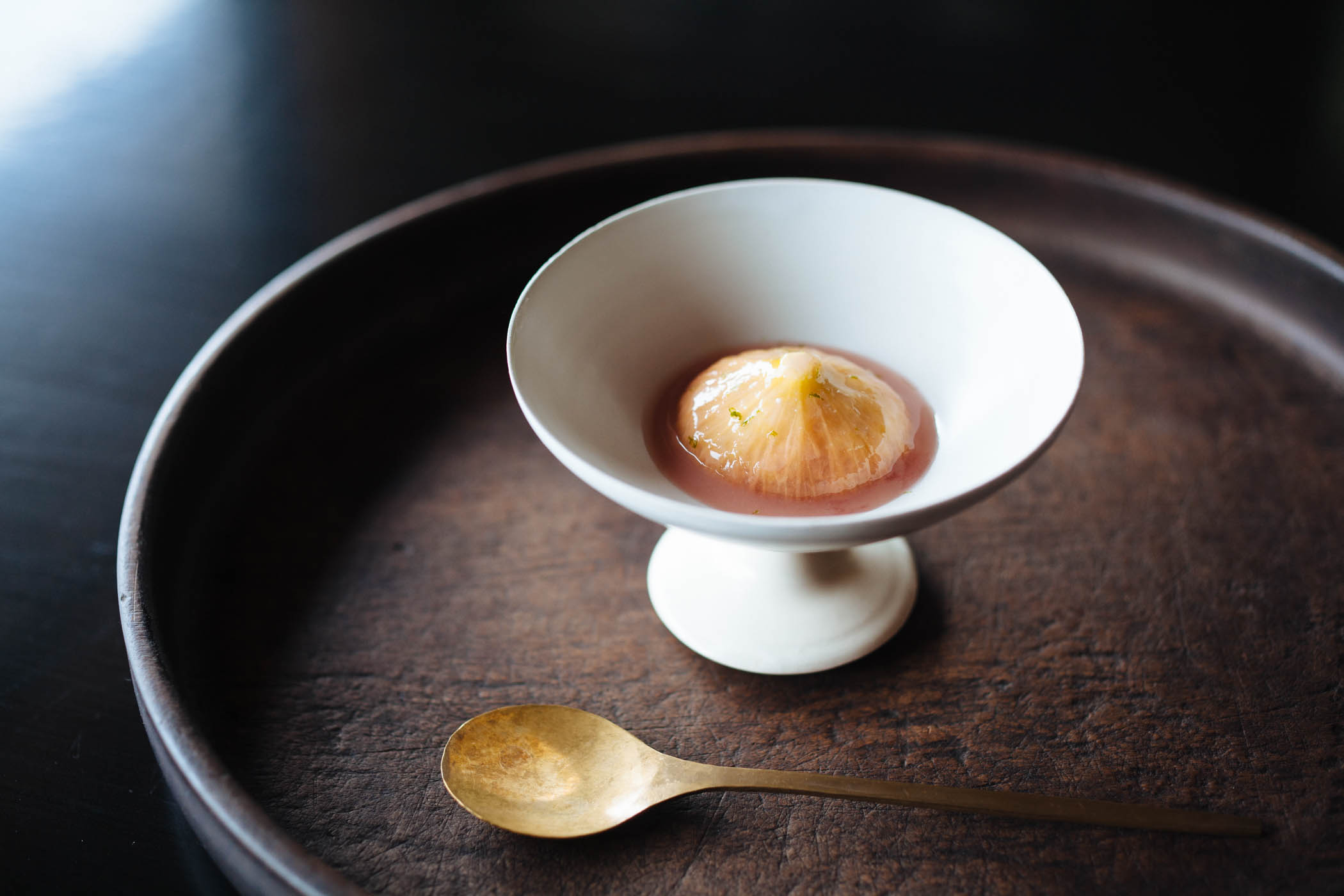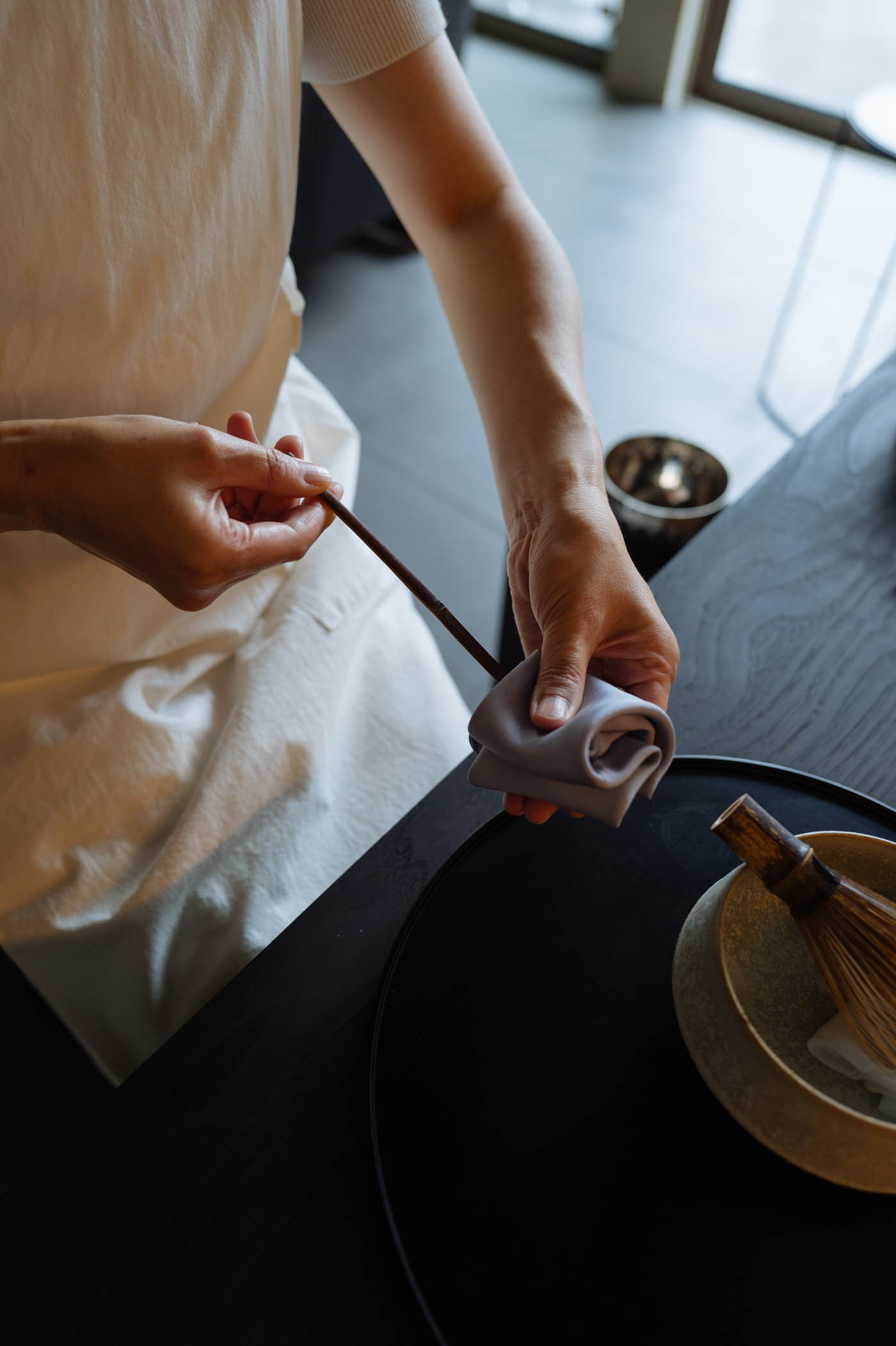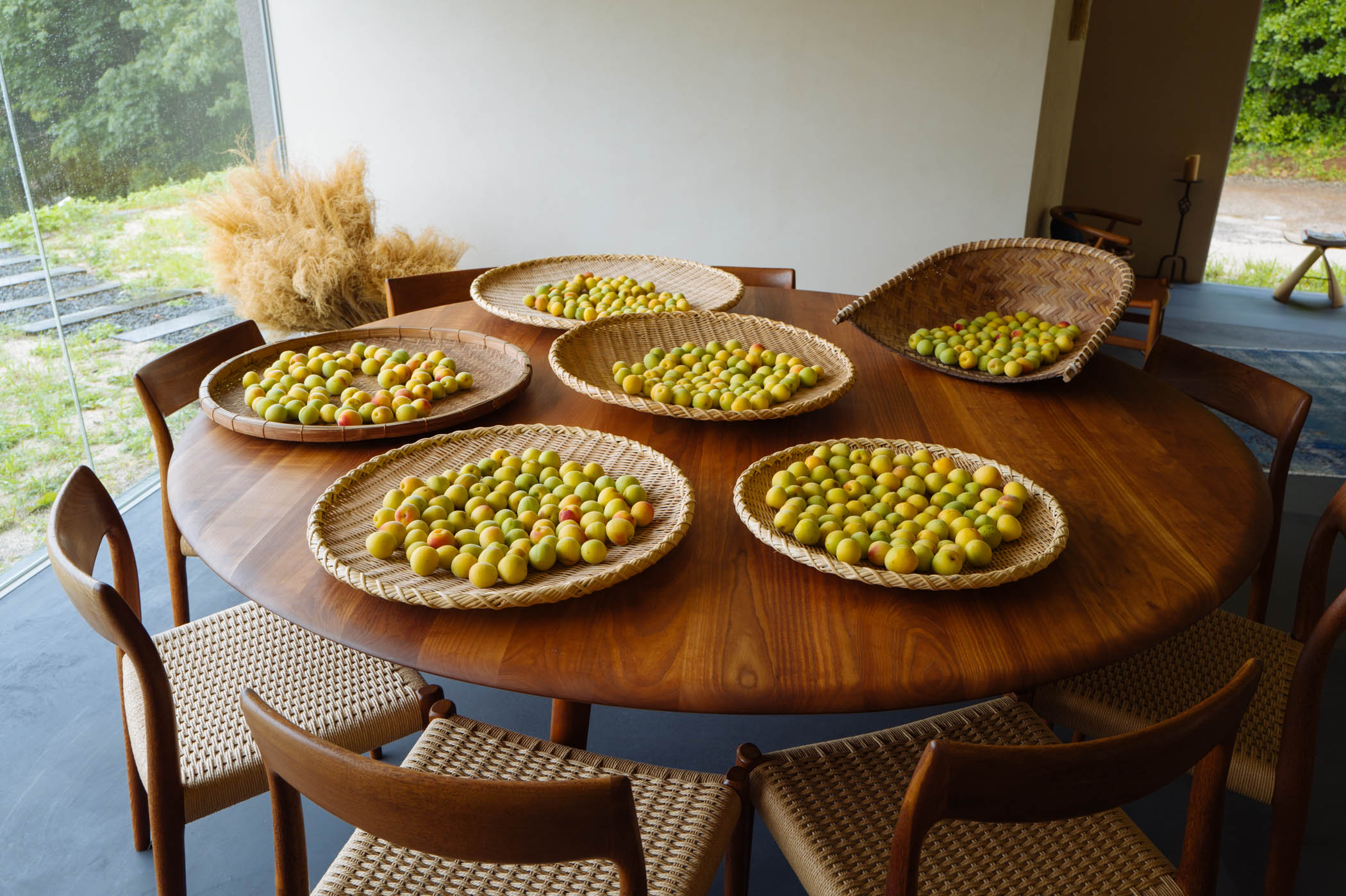Loquats are the sweet pleasure of June
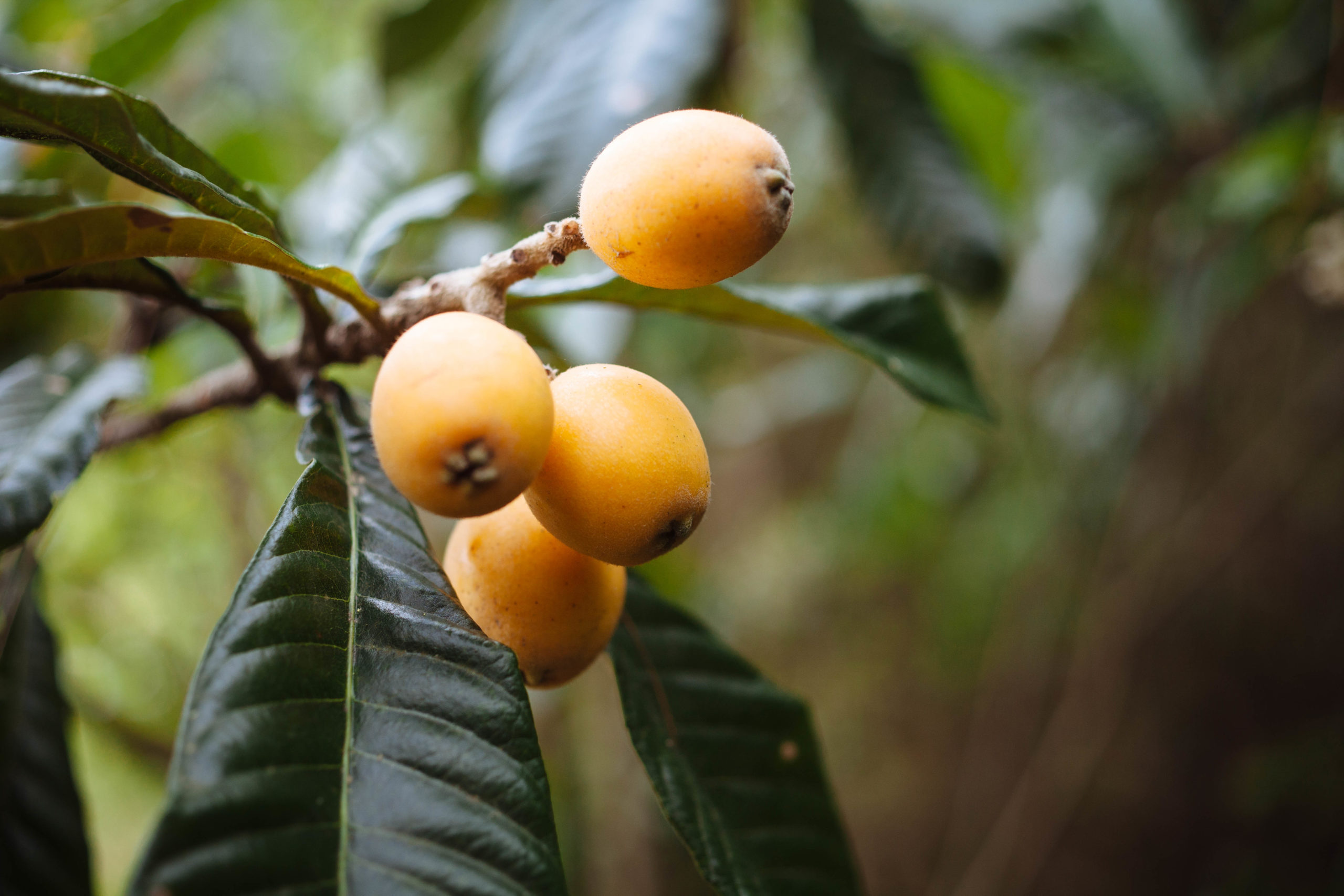
June is a month of sweet pleasures. After the hustle of staying warm all winter long, and the sprint through spring, we slow down at the start of June, if not in body, at least in mind. This season feels sweetly languorous with light that lasts so long and air that grows humid and warm. And sweet juicy loquats, or biwa as we call them here, are coming into season.
With foraging and plum work behind us, we enjoy a lull when there seems to be more time in each drawn out day. Between downpours I can find moments to wander for a while and gather a fistful of branches and buds to set in vases around the house. I gather what I can find, weeds and vines alike, and arrange them, two or three stems that reach from narrow necked vessels. Everywhere you look the hydrangeas are in bloom. I love the mountain hydrangeas that propagate at the edge of deeply shaded cedar forests, their white as white florets glowing against the heavily shaded interior like a cluster of stars in a charcoal summer sky.
Loquats ripen in early June and the fuzzy apricot colored orbs the shape of a Japanese lute, a possible namesake, sit bright and beautiful against rich dark oblong leaves. Ravens circle great stately trees and when the fruit is ripe they descend and have their fill. As I sat one morning at our long oak table sipping tea, a raven swooped over the deck on broad black wings spread wide holding a perfect marigold orb in its onyx beak. I heard its great claws clacking as it alighted on the roof and hopped up towards the peak. A few minutes later a hollowed out half moon of a loquat peel came tumbling down.
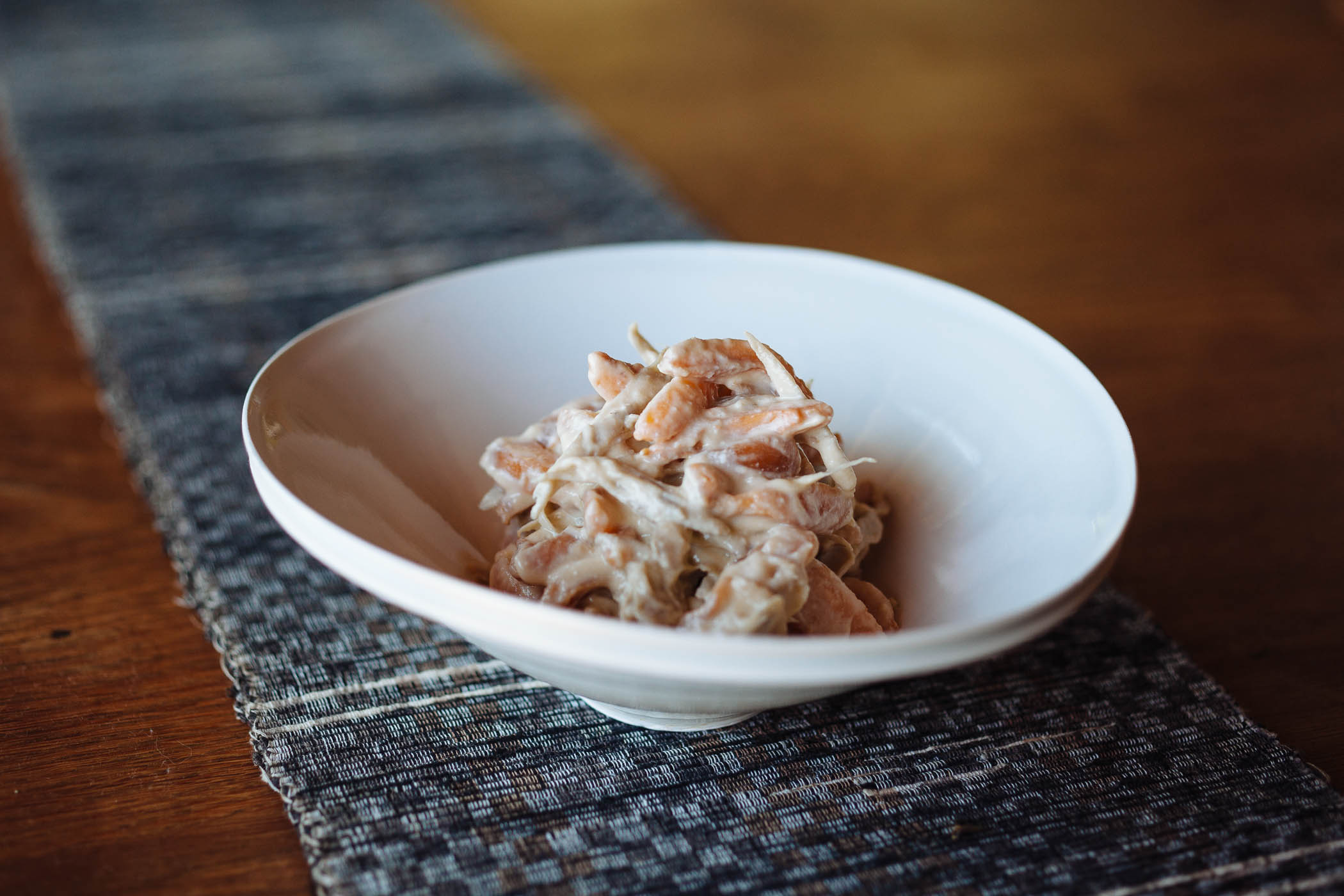
Raw, ripe loquats are a messy joy to eat, but Hanako is mildly allergic to them. She can eat them if cooked so in the past I’ve made chutney which is tasty, but I wanted to fold them into something more classically Japanese. We often incorporate fruits like figs and cherry tomatoes into shiraae dishes. Their sweet juiciness mingling beautifully with the nutty tofu dressing. So I sliced up a few biwa to sauté with gobo (burdock root). They fruits stand up well to cooking, maintaining their color, shape, and sweetness and make for a prefect sweet, creamy partner to the nutty crunch of burdock root.
A loquat tree grows in the shade of giant black pines at the edge of our backyard orchard. The highest ones are out of reach and reluctantly given up to the birds. But Kuniko picks enough fruit from this tree each year to fill a bowl. Beyond the sheer succulence of their color and juicy flesh, loquat leaves are medicinal. High in citric acid, they can be dried and made into a cool summer tea to drink as an antidote to heat and fatigue. A compress of boiled leaves has long been a folk remedy to treat sweat rash, an inevitable irritation of the skin in the humid heat of summer. Hanako tells of an aunt who would soak biwa leaves in alcohol to use as a salve to sooth her summer scrapes and bites.
After dinner, when a lazy dusk has finally arrived, we linger at the table with a cup of roasted houjicha tea and a bowl of loquats. When in their prime, the silken fuzzy cloaks are easily stripped away. The marigold flesh shimmers concealing four large chestnut colored seeds inside. What fabulous trinkets, I think. If I had a child I’d fashion currency of them for her to earn by collecting wild fruit for dessert. We peel them, one by one, savoring the softly sour, cool, crisp flesh. Outside the air is balmy, the darkness soft. A single firefly floats through the air, the light of its belly pulsing on and off, on and off, a beacon in the summer night.
